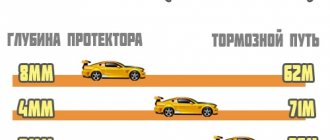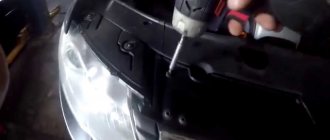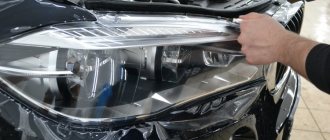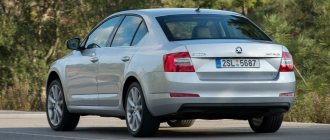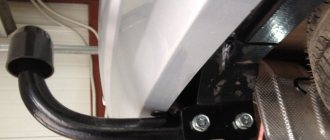Purchasing a car is a procedure that brings not only joy, but also certain troubles. This is due to the upcoming paperwork and the emergence of new responsibility. This article will focus on PTS. The photo of the document, its description and methods of obtaining will be discussed further. All this information will be useful to every car owner.
Short description
What is a title for a car? This is a document that the owner of the vehicle must have.
You may be interested in: How is alimony calculated: from what income, how much interest? How to calculate alimony?
Externally, the extract is a small standard form on which information about movable property, encumbrances and the owner of the object is written. Nothing more is written here.
In other words, the paper under study is a kind of official certificate with the characteristics of the machine and its technical parameters. This is some combination of an inventory and a certificate of ownership.
Registration of a vehicle after receiving a title
If you have just purchased a car or motorcycle, you will only have transit numbers, a sales contract and a title in your hands. The car must be registered and registered with the traffic police, for which you need to arrive at the nearest interdistrict registration and examination department of the State Road Safety Inspectorate (MREO STSI), place the car on the observation deck and collect the documents presented in the list below.
READ How to make changes to the vehicle registration certificate when changing your place of residence?
So, to register a car you need:
- Vehicle Passport (PTS);
- Application for registration;
- Document on the ownership of the vehicle (sale and purchase agreement, gift, ...);
- Receipt of payment of the state fee for issuing license plates;
- Receipt of payment of the state fee for issuing a registration certificate;
- Receipt of payment of the state duty for making changes to the PTS issued previously;
- Passport of the owner of the car (or passport and power of attorney, if the documents are submitted by a representative).
- MTPL insurance policy;
- Transit numbers;
With these documents, you need to approach a traffic police officer so that he can inspect the car on the viewing platform, check the body numbers, engine numbers, etc. with those recorded in the PTS and wrote a note about the inspection in your application. After this, you hand over the application with a mark and all the documents to the reception and wait for the registration certificate of the car to be issued by the traffic police.
Sample
You may be interested in:Stopping and parking is prohibited: sign coverage area, fine for non-compliance with the rules
What does PTS look like? Below you can see a sample of this paper. At the moment, the document has this interpretation.
Russia has decided to abolish paper registration certificates. However, previously issued car statements are still recognized as valid. They can still be used today.
Sample filling
The passport form must be filled out strictly according to the sample. If you violate legal norms, the documents may be invalidated, which will create many problems. Most often, information about the new owner is entered by the old owner, but it is recommended to ensure that the information is filled out correctly or to do it yourself.
The sample requires the following information:
- Full name buyer.
- Place of registration according to passport.
- Date of the transaction.
- Type of contract (purchase and sale or gift).
- Signatures of both owners.
It is better to look at an example of filling out a PTS before concluding a contract. This will help you avoid mistakes that will lead to unpleasant consequences. It is worth considering that you do not need to fill out other fields when purchasing, since this is handled by the traffic police.
Contents of the document
A sample PTS was presented above. Now you need to understand what information is contained in this paper.
Usually the technical passport indicates:
- the presence of encumbrances and restrictions on the car;
- details of the owner of the movable object;
- VIN number of the vehicle;
- color;
- place of registration of the citizen;
- technical parameters of the car;
- car model and make;
- year of construction.
There is no third-party information in the document. From the photo of the PTS you can understand that this is a form that is produced on special paper with government marks. Only in this form the extract is considered valid.
What is PTS in simple words
The abbreviation PTS stands for Vehicle Passport (also called vehicle registration certificate). This is the main document confirming ownership of the car. In addition, the PTS contains basic and important information about the car. Here we can draw an analogy with a passport of a citizen of a country.
What does PTS look like? This is a sheet of paper with watermarks in A4 format. Each such document, like a passport of a citizen of the Russian Federation, has its own series and number. The information contained in the vehicle passport can be divided into two types of information: technical data and information about the owners.
What does a vehicle passport look like?
Technical data about the car is recorded in the PTS once and cannot be changed. Such data is indicated:
- car model and make;
- type of vehicle;
- engine number;
- VIN number;
- vehicle weight (nominal and permissible);
- body color;
- motor characteristics (power, volume, type).
Information about the owners of the car in the PTS is entered on the other side of the sheet. All entries are made sequentially, in chronological order. Each such record is confirmed by the signatures of the previous and new owners, and is also certified by an organization having such authority (in most cases this is a division of the traffic police).
Unlike a driver's license and car registration certificate (which the driver must always be ready to present to the traffic police inspector), there is no need to carry a vehicle passport with you. Moreover, it is strictly not recommended to carry it in a car, so as not to make a “gift” to criminals in case of theft. A PTS is needed when registering a car, when selling it, or in other infrequent cases when it is necessary to confirm its ownership.
If a car is purchased at a car dealership on credit, then the bank issuing a loan for the purchase of a car, as a rule, keeps the original PTS as collateral, and the owner of the car is given a certified copy of the PTS.
Where do they get it?
You may be interested in: Inspection. What the document looks like: photo and sample diagnostic card
What does a Russian vehicle passport look like? The answer to such a question will no longer confuse the citizen. Next, we will study the maximum relevant information on this paper.
For example, where to get it. Today, the issuance of vehicle registration certificates is carried out:
- MFC;
- car showrooms;
- auto manufacturers;
- traffic police;
- MREO;
- traffic police departments.
If the car is used, then the old registration certificate for it must be transferred in the accompanying transaction by the previous owner of the movable property.
Important: if the PTS is lost, it will have to be fully restored by the government agencies listed above.
What are the dangers of having a duplicate title when buying a car?
When buying a car, regardless of whether you buy it second-hand or at a car dealership, always ask for the original title. The absence of the original is a signal to think about the purity of the transaction.
Many stolen cars are sold with a fake title or with a copy of the vehicle’s passport (even if this copy has stamps supposedly certifying its authenticity). As you remember, such copies can also be issued by the bank in which the car is pledged, and in one of whose safes the original PTS is most likely stored. It is also impossible to buy such a car, because the loan has not been paid off for it.
If the car being sold has a duplicate title issued to replace the previously lost one, the original passport of the vehicle may also be available, according to which it can be sold to another owner or pledged against the same bank loan.
If you are confident in the seller and still decide to purchase a used car with a duplicate, then it would be a good idea to check the correspondence of all the data in the duplicate with the data on the car (first of all, all numbers), as well as with the data contained in the certificate on vehicle registration. The same precautions apply when purchasing a car from authorized dealers.
Reasons for replacement
Today, many civil documents are subject to replacement under certain circumstances. The photo of the car’s registration certificate could be carefully studied using the example above. Here, as you might guess, information is written that may change. In this case, the registration certificate is invalid and is subject to mandatory exchange.
PTS replacement is carried out if:
- there has been a change of ownership of the property;
- personal information of the current owner of the vehicle has changed;
- the technical parameters of the car have changed;
- the document has become unusable or damaged.
As a rule, there are no real problems with re-issuing a technical passport for a car. The main thing is to adhere to a certain algorithm of actions. We'll talk about it later.
What does the PTS for a car look like?
Please note that the technical passport for the car is a document of strict accountability, the PTS is printed on official state blue forms produced by the Goznak enterprise. All technical passport forms have a protective stripe and special watermarks.
Information entered into the PTS is distributed in 24 columns:
- Identification number, or VIN code. This is a code of 17 numbers and letters, which encrypts information about the factory characteristics of the car;
- Make and model of the vehicle, and this information can be filled out in both Russian and English;
- Type of vehicle, that is, whether the vehicle is a passenger vehicle, motor vehicle or freight vehicle;
- Vehicle category (A, B, C, D and E);
- Year of manufacture of the vehicle;
- Engine number and model;
- Chassis and frame number;
- Body number. This number most often has similar features to the VIN code. But in some cases, typical, for example, for American cars manufactured for distribution only in the US domestic market, the body number differs from the VIN;
- Body color;
- Car engine power in horsepower;
- Engine displacement, indicated in cubic centimeters;
- Engine type (diesel or gasoline);
- Maximum permissible vehicle weight;
- Weight of the vehicle without load in kilograms;
- Country of origin of the vehicle;
- Environmental class of the car (Euro-3, Euro-4, etc.);
- Country of export of the vehicle;
- Series and number of the customs declaration - filled in upon issuance at customs;
- Customs restrictions imposed on the vehicle;
- Name or full name of the owner;
- Owner's address;
- The organization that issued the PTS;
- The address of this organization;
- Date of issue of PTS.
In the PTS samples of used cars, in addition to the above information, you can also see data on all past owners of the car, changes in the technical characteristics of the vehicle and the issuance of duplicate PTS.
Complete re-release
First you will have to understand under what circumstances a person needs to completely reissue the relevant document. The article below shows a photo of the PTS with a special mark “Duplicate”. It appears when the documentation is completely reissued.
The corresponding operation is carried out if:
- the registration certificate was stolen;
- The PTS was lost by the citizen;
- The documentation has run out of space to add new data.
In other cases, adjustments to the existing registration form are usually required. Achieving your desired goal is easier than it seems.
What is the price
We have already studied the new type PTS. However, it is not entirely clear how to obtain or reissue the corresponding paper.
You may be interested in:Checking restrictions on registration actions in the traffic police by VIN code
How much does it cost to issue a technical passport? Actually, it's free. There is no need to pay for the initial receipt of the document. Monies in the form of state fees are charged only for adjustments or complete re-production of the paper being studied.
In 2021, you may encounter the following payments:
- making adjustments - 350 rubles;
- complete replacement of the technical passport - 800 rubles.
These fees may be reduced by paying the appropriate fees. Modern drivers are entitled to a 30% discount on state duties throughout 2021.
Who issues such a document?
There are few authorities that have the right to issue. For starters, this is the manufacturer, if the car is domestically assembled. When purchasing a car through a car dealership, regardless of the place of assembly, the owner is immediately issued with such a title.
When a car is purchased on credit, the car’s passport is kept by the car dealership or bank . The owner is given only a copy. In some situations, an original is issued for confirmation by the authority.
When importing a foreign car, a passport is issued by customs authorities after payment of duties and fees.
A vehicle passport is issued by the traffic police if the original is lost. In such a situation, the owner applies to the traffic police department. In addition, when purchasing a used car, there may be a situation where there is not enough space in the technical passport to include the new owner. In such a situation, the traffic police issues a new title for the car or issues an additional sheet.
The next body is enterprises specializing in car conversion. For example, when the owner ordered the assembly of a home-made vehicle , he will need to undergo a lengthy certification and testing procedure. After this, a PTS is issued for subsequent registration with the traffic police.
Correction procedure
A photo of the PTS of the established form indicates that there are no special marks or stamps on the documentation form. At least until a duplicate is requested.
To correct the information in the PTS, the owner of the car or his representative needs to:
- Create a specific package of documents. It directly depends on the circumstances under which the request for service occurs.
- Pay the state fee for updating the data in the registration certificate.
- Contact the authorized body with an application to correct the vehicle documentation.
- Carry out vehicle maintenance. It is carried out by the traffic police or MREO inspectors.
- Collect registration documents for the car. Certificates are usually prepared very quickly.
The case is completely completed. In the course of the described actions, the owner of the vehicle will correct the information in the vehicle passport. The main problem here is the formation of the necessary package of documents to achieve the desired goal. But we will deal with this issue later.
How to check your title before purchasing
When making a transaction to purchase a vehicle, you need to check its passport (PTS). At the same time, if possible, it is recommended to refuse a car for which the seller only offers a duplicate. If it was issued due to the loss of the original, there is a high probability of becoming a victim of fraud. In a situation where the “Special Notes” include reasons such as replacing a document that has become unusable or completed, you can consider options.
When checking the original or duplicate of a vehicle passport, you need to pay attention to the following points:
- compliance of the document with all degrees of protection - hologram, paper, printing, ultraviolet signs;
- absence of labels about restrictions, as well as incomprehensible encodings and unnecessary stamps;
- country of manufacture of the car - if the country that does not correspond to the make of the car is listed, this may indicate that the vehicle was restored there after a serious accident or even assembled from spare parts.
If you have any questions or doubts regarding the document, it is recommended to go to the nearest traffic police post or traffic police department. Service employees constantly deal with PTS, so they will be able to dispel all doubts. Additionally, they are even capable of hitting the car through the bases if its owner does not object.
Instructions: complete reissue of the document
So, we’ve sorted out the appearance of the vehicle’s PTS. What does the document look like after it has been completely updated? If we are talking about a reissue, then you will notice that the inscription “Duplicate” appears on the front side of the standard form. It cannot be removed under any circumstances.
Let's assume that you need to order a duplicate registration certificate due to its loss or theft. In these situations, the potential applicant is advised to act as follows:
- Contact the police. Here you need to report the theft/loss of car documents.
- Pick up a certificate from the Ministry of Internal Affairs of the established form. It will definitely come in handy later.
- Prepare statements for further restoration of PTS.
- Go to the authorized body and leave a request there to reissue the technical passport of the vehicle.
At this stage, active actions end. The applicant will be issued a technical passport with the old data, but marked “Duplicate”.
How to distinguish a fake from the original
Often, fake passports are very difficult to distinguish from the original with the naked eye. But upon careful examination with the help of an ordinary magnifying glass and a flashlight, you can see the main elements of paper protection.
What to pay attention to:
- Paper quality. The material from which car document forms are made differs from plain paper. It is a little rough, reminiscent of the paper on which banknotes are printed.
- The ornament executed on the form has clear boundaries even when enlarged and does not have blurred boundaries.
- The RUS watermarks and stars should be readable in the light of the document. They should be a little blurry. For counterfeits, security marks have clearly defined boundaries.
- On the back of the paper, in the upper left corner, there is another security element in the form of a “rose”. The design should be three-dimensional, it can be felt to the touch, and the color of the element should change depending on the angle of inclination from green to gray.
- The inscription “Vehicle Passport” sticks out a little, thanks to the use of 3D printing technology.
- The hologram in the corner of the form should be glossy, not matte, and shimmer from different angles. The boundaries of the hologram must be clear, and on the protection element itself a car with the inscription “Russia. Russia".
- When examining the inner fold line of the passport, you can see the inscription forming a dark unbroken stripe “vehicle passport” - a special microtext, the letters of which must be clear and unblurred.
In addition to the listed security elements, the auto document also has additional signs of originality. But for this you need to have a flashlight with an ultraviolet glow. Basically, fake passports are detected during an initial visual inspection.
However, if a car owner is faced with the need to buy a vehicle for the first time, it is better to take a sample document with him or seek help from citizens more experienced in this matter.
Additional expenses
We've sorted out the PTS photo. And with the procedure for completing this paper too. But there is also information that can be useful to every car owner.
The thing is that PTS without STS is not updated. Therefore, the car owner will have to pay another 500 rubles for a paper copy of the registration certificate or 1,500 rubles for a plastic interpretation of the document. Discounts through “Government Services” also apply to these fees.
If the need arises, you can order license plates for the car along with the registration certificate. If we are talking about a passenger vehicle, you need to pay an additional 2,000 rubles, and in the case of motorcycles and trailers - 1,500 rubles.
Who issues the title for a car?
The new owner of the car must receive a title along with the car, in which he must be entered as the owner. You can obtain a technical equipment passport through one of the following sources:
- from the previous owner of the car;
- from a car dealer;
- at the manufacturing plant;
- at the customs office.
Let's consider each of the options. Each car owner, when selling or donating his car, transfers the title to the new owner and signs in the column “special information”. A car purchase and sale agreement between two individuals can be drawn up independently and signed without registration or notarization. When carrying out such transactions with a used car, the old owner of the car transfers the title to the new one along with the vehicle. Thus, it is impossible to re-register a car from one owner to another without first transferring the title (which, as you remember, is strictly not recommended to be stored in the car). Such a system makes it possible to prevent many criminal enterprises associated with car thefts and their subsequent sale.
When purchasing a car at a car dealership (this applies to both new and used cars), the buyer receives a title from its employees. The procedure for entering information about the new owner will be the same as when purchasing a car from a private owner. Even if the car is completely new, its owner will be recorded in the vehicle passport as the second and sometimes third owner. This state of affairs is normal, because the manufacturer transfers the car to the dealer, and not to the buyer. In addition, a car can be repeatedly transferred from one legal entity to another until it reaches the final consumer. In any case, you, as the buyer of a new car, will be considered its first and only (until sold to another person) owner.
As noted above, the manufacturer, together with the vehicle that comes off the assembly line, transfers the title to the division of the dealer network through which the car is sold. Here we are talking about factories that produce cars in Russia. Things are different with foreign manufacturers.
If the car is manufactured abroad, then the vehicle passport is issued at the border by the customs authority. This procedure applies to both new and used cars.

